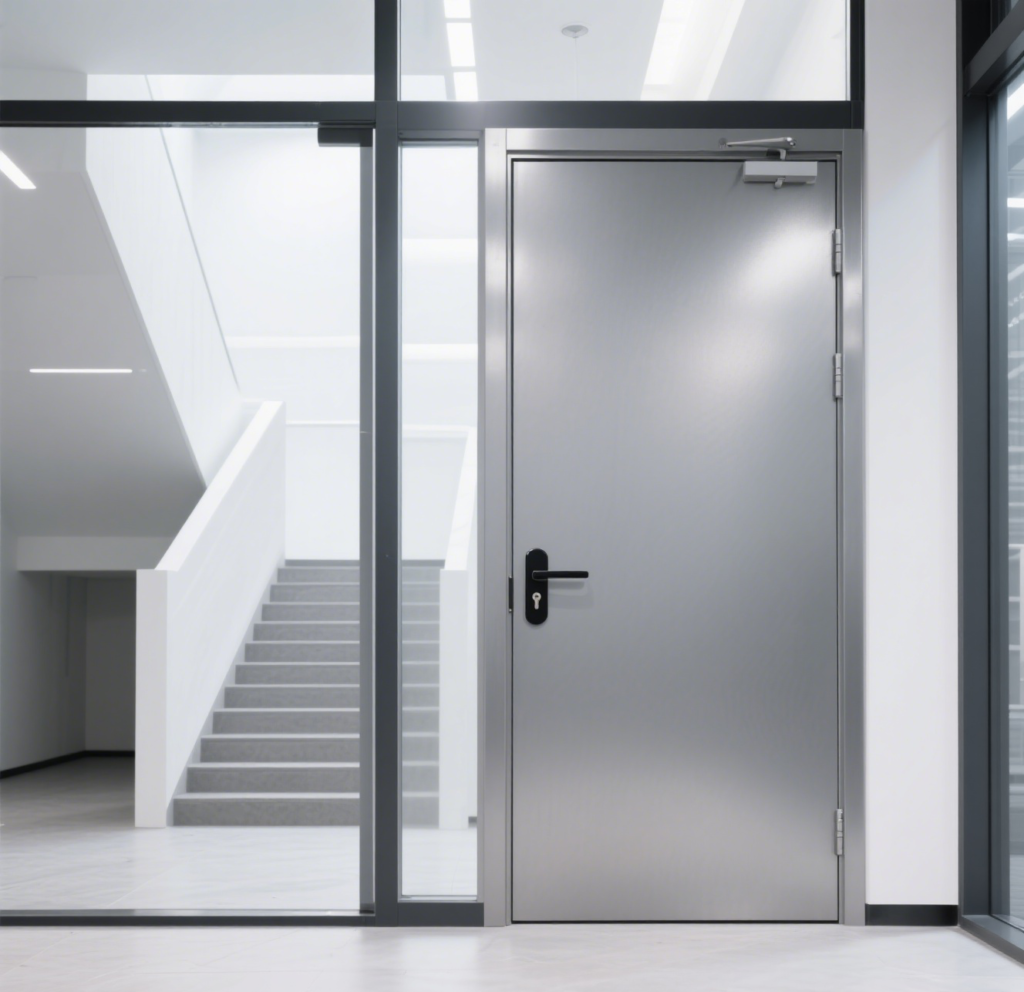A fire rated door, also known as a fire-resistant door, is specially engineered to delay the spread of fire and smoke within a building. While not entirely fireproof, these doors are made with materials designed to withstand high temperatures for a specific period, buying critical time for occupants to evacuate safely and for emergency services to control the situation.

What Makes a Door Fire Rated?
Fire rated doors are built with a fire-resistant core, typically composed of materials like gypsum, vermiculite, or mineral-based boards. The outer layer can be steel, wood, or aluminum, depending on the application and aesthetic requirements. These doors are commonly installed in fire-rated walls, where the wall itself is designed to contain a fire for a set time (e.g., 60 or 120 minutes). The door rating must match at least ¾ of the wall’s fire rating. For example, a 90-minute door is required in a two-hour rated wall.
Certified and Tested for Safety
In the United States, fire doors must comply with rigorous standards set by organizations such as the National Fire Protection Association (NFPA) and UL (Underwriters Laboratories). In other regions like the UK or EU, testing is governed by entities such as the British Woodworking Federation (BWF) or EN standards. Labels or markings (often embossed, etched, or color-coded pins) are used to indicate the door’s fire resistance level.
Components Matter: Frame, Seals, and Hardware
It’s not just the door panel that matters. Frames, locks, hinges, closers, and even seals must also be fire-rated. Intumescent seals—which expand when exposed to heat—are critical to closing any gaps during a fire event, preventing smoke or flame from passing through.
Fire doors must also be self-closing and self-latching, ensuring they return to a closed position immediately after opening. They should never be propped open by wedges or unauthorized hardware.
Where Are Fire Doors Used?
Fire-rated doors are typically found in internal sections of commercial buildings, hotels, schools, hospitals, and residential complexes. They are especially critical for stairwells, corridors, and between high-risk areas like kitchens and living spaces. In rare cases, they can also be installed on external walls, particularly where buildings are situated close to neighboring structures or public roads.
